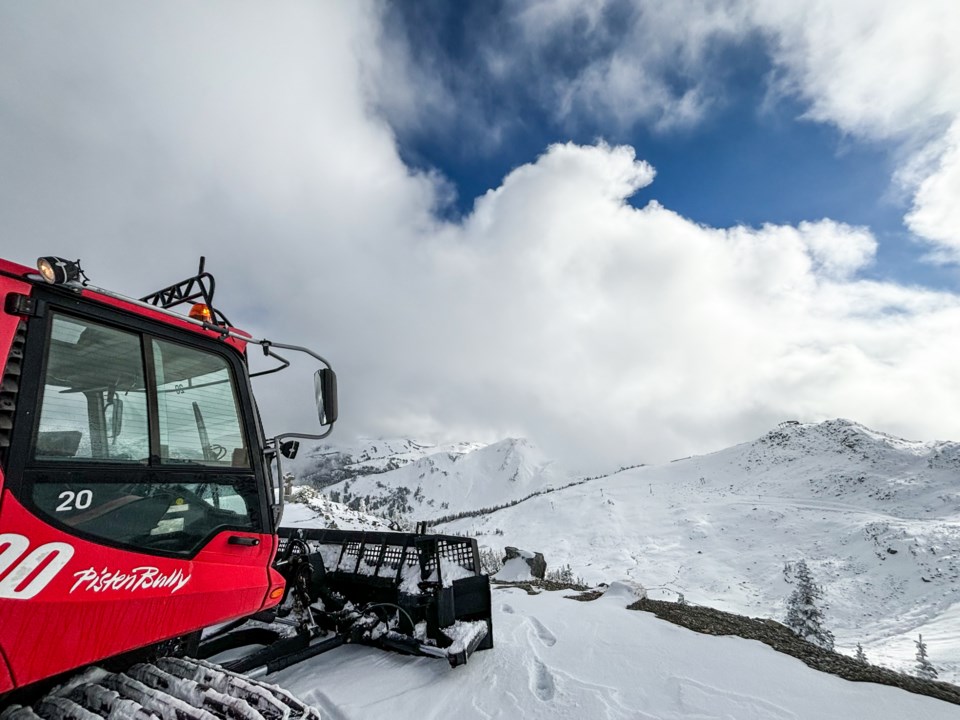A lesson I’ve learned after about 20 ski seasons in Whistler is that at this time of year, one should avoid counting their chickens. I like to think I’m an optimist, but I’ve been burned too many times by the early November snowfall peaking early then sputtering out. You can look at all the long-range weather predictions you want, but when the rubber hits the road, big snow is all up to the gods.
If the mythology is more or less correct, the gods are quite indifferent about the plight of the folks sliding around on our mountainous plane of existence. A record-breaking snowstorm likely could have meant the difference between life and death in the pioneering days of British Columbia. Now it determines whether seasonal ski bums walk away with a lifelong memory of back-to-back pow days. Or not.
While I’m not a fan of borderline superstitious weather predictions, I do have respect for the laws of statistics. And in my 20 years of skiing in Whistler, I’ve experienced three dismal snowfall seasons: 2004-05, 2014-15 and 2023-24. Generally, these seasons fell flat due to increased temperatures and rain, bookended by either Pineapple Express or atmospheric river events. However, the seasons following these three dismal ones were nothing short of amazing.
You can dive further into the snowfall stats if you want, but I’ve always found raw snowfall numbers to be a bit misleading. Eighty centimetres of 99-per-cent water content snow (followed by rain to top it up to 100 per cent) might be great for pushing up the season average, but it doesn’t necessarily mean the skiing is awesome. The best indicator of a great season is consistency; cold temperatures, breaks in the weather for alpine visibility and a solid early season base to fill in the creeks and holes. Bonus points if the backcountry snowpack behaves itself without forming dangerous crusts and weak layers. But hey, you can’t have it all at once.
The early season skiers are already at it, touring and booting through barely-covered ground vegetation for some low-angle, low-hanging fruit. While it’s not my cup of tea (until the base thickens up to an acceptable standard for actual skiing), I admire the dedication. Skiing is better than not skiing. But just like the opening day overstoke, the urge to turn 10 good turns into 20, or turn a small hit into a medium-sized air, is ever present. Even on the strongest early season snowfalls, the hazards persist. And it’s the overstoke that will get you into trouble.
I believe it was the 2016-17 opening week for Whistler Blackcomb where I declined to listen to my own advice and was caught up in the overstoke. Whistler Mountain had already opened to much fanfare, but Blackcomb’s opening was the one to watch. About a metre and a half of unconsolidated snow was on the ungroomed trails. It was so deep snowboarders and skiers alike struggled with any amount of flat terrain. It was on.
Crystal Chair opened on Blackcomb’s first day of operation, and I knew where some great turns were waiting. I knew better than getting into trouble in the gladed runs, which despite the amazing opening conditions, were not ready. Ridgerunner was groomed and I traversed high to get some of that great rolling pow terrain on the skier’s right of the run. Visibility was low, but I wasn’t about to let that stop me getting the best turns of the day. I dropped in and got my five glorious turns, the flat light and terrible visibility blurring my horizon. I decided to push for another couple turns despite the uncertainty and suddenly dropped off a snowbank wall onto the groomed run.
This would normally have been a relatively low-consequence crash, but because there was no skier compaction anywhere, I fell right into a small creek. I tumbled forward, my right ski hung up in the creek and my binding failed to release. I felt a sudden shooting pain as my calf muscle stretched beyond its allowable range. I was lucky to not snap a tendon or overextend my knee, but had to limp off the hill.
That torn calf muscle followed me for the next month as I desperately returned to my physio in need of a quick return to full-tilt skiing. Even with the healing, the vibration of skiing fast would send shooting pain up the back of my leg. I was back to nominal skiing by the holidays, but not without the regret of my opening day overstoke.
The lessons of the resort are the same as those seeking early season backcountry turns. Ski conservative. Call it early. Don’t push it. There’ll be plenty of time for sending it on a safer mountain.
Vince Shuley is getting primed for Whistler Blackcomb’s opening day. For questions, comments or suggestions for The Outsider, email [email protected] or Instagram @whis_vince.




